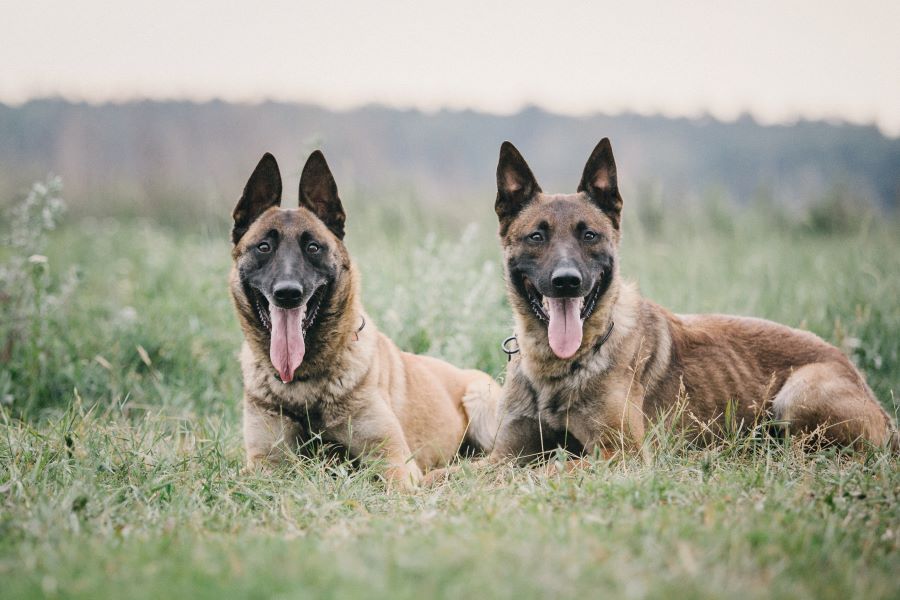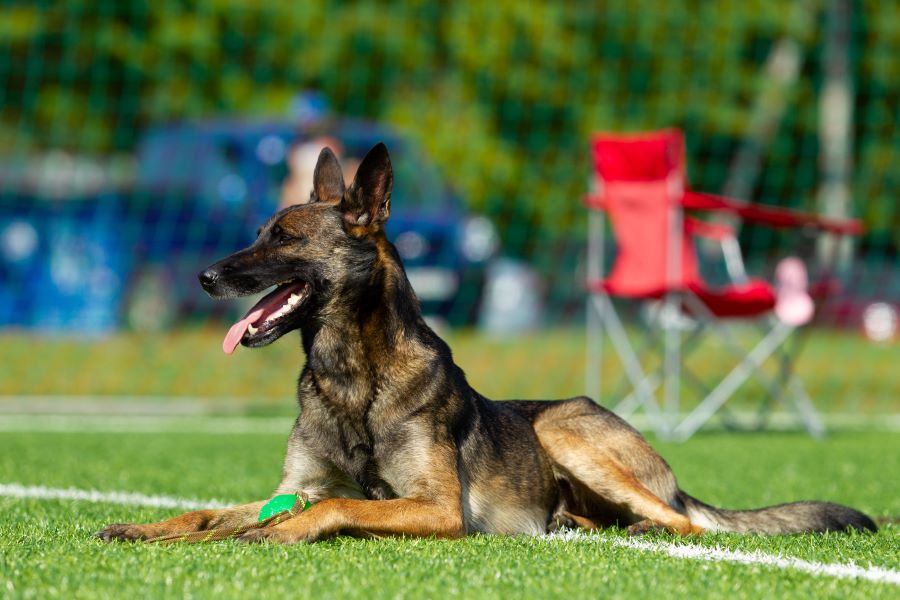Get Pet Insurance for your Cat & Dog

Zero
Documentation
Quick
Claim Process
Affordable
Premium
Terms and conditions apply*
- {{species}}
- {{indoorOutdoor}}
- {{suminsured}}
Belgian Milano Dog Breed Characteristics & Information

The Belgian Malinois dog, a breed often associated with intelligence and unwavering dedication, has captured the hearts of dog enthusiasts around the world. The Belgian Malinois has an illustrious history and a set of characteristics that make it a standout breed in the canine world.
In this article, we'll explore what sets the Belgian Malinois apart and delve into their unique characteristics, proper care, training techniques, and common health concerns.
What sets Belgian Dogs Apart From Other Dogs?
Belgian Malinois Dogs are often favoured as working dogs in various roles such as police work, search and rescue, and military service. Their keen senses, agility, and strong work ethic make them stand out in the world of canine companions.
The Belgian Malinois is a breed that is not only physically striking but also mentally sharp, which makes them a unique and treasured addition to the world of dog breeds.
What are the 7 types of Belgian Malinois?
The Belgian Malinois is a breed that originates from Belgium. To identify if your dog is a Belgian Malinois, you can look for coat colour, body size, and erect ears. Seven types of Belgian Malinois are:
- Black Belgian Malinois: Black Malinois is known as the Belgian dog with the darkest coat. They have a solid black coat that is dense and short, with a layer of thick undercoat.
- Red Sable Belgian Malinois: These Malinois have a reddish or tan base coat with black-tipped hairs that create a stable pattern. These Malinois also have black masks around their eyes.
- Brindle Belgian Malinois: The coats of brindle Belgian Malinois have a mixture of brown and black hair. Because of their colour, they are regarded as rare Belgian dogs and are expensive.
- Fawn Belgian Malinois: The coat of a fawn Belgian Malinois is pale brown with a hint of red. They might have a lighter sandy tone or a deeper brown tint. Typically, the coat is straight and short.
- Liver Belgian Malinois: The coat of a liver Belgian Malinois is dark brown in colour. Typically, the coat has a thick undercoat and is short and dense. The eyes of the Belgian Malinois have a black mask.
- Gray Sable Belgian Malinois: Gray Sable Belgian Malinois boast a coat composed of a blend of grey and black strands with a pattern formed by the black hairs. Their coats tend to be short and dense.
- Cream Belgian Malinois: Cream Belgian Malinois sport a light cream-coloured coat that's typically short and dense, boasting a thick undercoat. They also have a defining black mask around their eyes.
What are the Characteristics of Belgian Dogs?

Belgian Malinois dogs are distinguished by a unique set of characteristics that make them stand out in the dog world. These characteristics include:
- Lifespan: Belgian Malinois dogs typically have a lifespan of 10 to 14 years. This longevity is attributed to their robust health and well-maintained physical condition.
- Height: These dogs are of medium to large size, with males standing at around 24 to 26 inches at the shoulder and females slightly smaller at 22 to 24 inches.
- Colour: They come in rich shades of fawn to mahogany, often with black markings on the muzzle and ears, accentuating their striking appearance.
- Weight: On average, male Belgian Malinois dogs weigh between 18 to 36 kg, while females weigh slightly less.
- Behaviour and Personality: They are loyal, gentle, and lovable, especially with kids. But their herding instincts might lead them to herd other pets.
- Living Condition: Belgian Malinois dogs thrive in active households with ample space to move and play; this environment provides them with mental stimulation.
- Coat: The Belgian Malinois boasts a short, straight, and dense coat. This coat is weather-resistant, providing them with protection in various climates.
- Breed Group: The Belgian Malinois belongs to the herding group. While they excel in herding, they are known for their versatility, excelling in various canine disciplines.
- Temperament: Energetic, alert, and highly intelligent, Belgian dogs display an admirable work ethic. However, Malinois can also be stubborn sometimes.
How to Train Belgian Dogs?

Training a Belgian Malinois dog requires patience, consistency, and an understanding of their high intelligence and work ethic. Here are some training techniques that work well with this breed:
- Teach Basic Commands: Belgian Malinois dogs excel in obedience training. Start with basic commands like sit, stay, and come, and gradually progress to more advanced commands.
- Socialisation: Early socialisation is crucial to ensure that Belgian Malinois dogs are well-adjusted. Exposing them to various environments and situations helps prevent behavioural issues in the future.
- Reward-Based Training: Belgian Malinois dogs respond well to positive reinforcement. Rewarding them for good behaviour with treats or praise can be highly effective in training them.
- Discourage Bad Behaviour: Consistently and calmly address issues like excessive barking, digging, or aggression. Avoid harsh punishment, as it can lead to fear and aggression.
- Herding Training: Given their herding instincts, herding training can be a fulfilling and stimulating activity for Belgian Malinois dogs. They excel in herding trials and competitions.
- Leash Walking: Proper leash walk training is necessary, as these dogs are strong and energetic. They should be trained to walk on a leash by using a harness without pulling.
- Protection Training: Belgian Malinois dogs are often used in protection roles. Professional protection training can help them channel their protective instincts appropriately.
What are the Health Problems with Belgian Malinois Dogs?
Like other breeds, Belgian Malinois dogs have a generally good health record, although they can have certain health risks. Five common health issues are:
- Hip Dysplasia: This genetic condition can lead to hip joint problems and lameness. Regular veterinary check-ups and a healthy diet can help manage this condition.
- Progressive Retinal Atrophy (PRA): PRA is a degenerative eye disease that can lead to blindness. Regular eye exams are crucial for early detection.
- Hypothyroidism: This hormonal disorder can cause weight gain, lethargy, and skin problems. It can be managed with medication and dietary adjustments.
- Cataracts: Belgian Malinois dogs can develop cataracts, which may require surgical intervention if they affect vision significantly.
- Eye Problems: In addition to PRA and cataracts, they are prone to other eye issues, including corneal ulcers and retinal problems. Regular eye exams are essential.
How to Take Care of Belgian Malinois Dogs?
Belgian Malinois are a high-maintenance dog breed. They require a lot of attention and care. Here are some important aspects of caring for these dogs:
- Diet and Nutrition: A balanced diet suitable for their life stage and energy needs is the ideal diet for a Belgian Malinois. Their diet should include fresh, meaty diets with lots of protein, like meat, bones, and offal.
- Feeding: Belgian Malinois puppies should be fed small portions of food 3 to 4 times a day until they are 6 months old. And a large portion of food twice a day for adult Belgian Malinois dogs.
- Grooming: Every couple of weeks of brushing helps in removing loose hair and maintaining a healthy coat. Their dense coat makes them adaptable to various climates.
- Exercise: These dogs are highly active and require regular exercise to stay healthy and happy. Long walks, runs, and engaging playtime are crucial for their physical and mental well-being.
- Bathing: Belgian Malinois dogs do not need frequent baths. Periodic baths are sufficient, as their coat naturally repels dirt. Over-bathing can strip their coat of essential oils.
- Dental Care: Dental health is important for all dogs, and the Belgian Malinois is no exception. Regular teeth cleaning and providing appropriate chew toys can help maintain their dental hygiene.
Belgian Malinois dogs are truly a breed apart, combining intelligence, loyalty, and an unparalleled work ethic. Their remarkable characteristics make them stand out as exceptional companions and working partners.
Whether they're working in law enforcement, participating in dog sports, or being cherished members of a family, these dogs thrive when provided with the right care, training, and attention.
















